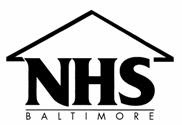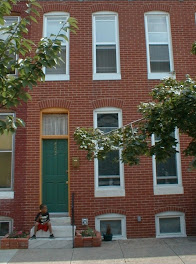Dear Editor,
This letter is in response to Ed Duffy’s op-ed piece in the Baltimore Examiner, which blamed the current U.S. mortgage and financial crisis on lax lending policies that came as a result of the Community Reinvestment Act of 1977 (CRA). Nothing could be further from the truth.
The current financial crisis is not the result of the extension of credit to low- to moderate-income and highly concentrated minority communities as urged by the CRA. The CRA “is intended to encourage depository institutions to help meet the credit needs of the communities in which they operate.” Those markets can be served responsibly, without creating extraordinary risk for lenders. In fact, for thirty years, NeighborWorks® organizations like Neighborhood Housing Services of Baltimore have helped provide mortgage credit to low-income communities with stellar results.
Many reports appear to have overlooked the fact that the current financial distress is a recent phenomenon created largely by institutions that are not subject to CRA requirements. Over the last several years lending by mortgage bankers and other non-depository intermediaries has eclipsed the production of depository lenders, accounting for more than half of the mortgage loans originated over the past five years. Additionally, a review of data provided by mortgage lenders pursuant to the Home Mortgage Disclosure Act reveals that lenders that are not subject to oversight by a federal banking agency (i.e. not subject to CRA) originated over half of the higher-priced conventional mortgage loans reported in 2005.
CRA did not push banks and other institutions to make loans to unqualified borrowers nor did it encourage them to relax underwriting criteria to the point where they failed to consider a borrower’s capacity to repay the loan.
For more than three decades CRA has encouraged the extension of credit to those with less than perfect credit histories. We know these borrowers can be successful homeowners. A sample of NeighborWorks® network originated mortgages, and new data from state housing finance agency-originated loans shows that these loans made primarily to low- and middle-income households, with average to below-average credit scores, have foreclosure rates significantly better than subprime.
For example, according to the Mortgage Bankers Association, 4.26 percent of subprime loans began the foreclosure process in the second quarter this year. In contrast, the foreclosure start rate for loans within the NeighborWorks network was just 0.21 percent. In fact, NeighborWorks performance is better than the prime market, which was reported by the MBA at 0.61 percent for the same period.
Sincerely,
Felix Torres Colon, Executive Director
Neighborhood Housing Services of Baltimore
Tuesday, October 14, 2008
Friday, October 3, 2008
Suburban Decline Becoming a Reality
By: Alicia Schuller, Marketing Coordinator, NHS of Baltimore
One lonely, occupied home standing in a sea of abandoned row homes, stretching block after block— children and families sitting on their front steps next to graffitied shells of homes with boarded up windows and crumbling walls. Residents of Baltimore city are all too familiar with these images.
Surprisingly, the images that once plagued metropolitan centers are becoming increasingly common in the outlying suburbs. Yes, the suburbs. New studies and information on suburban decline indicate that McMansions are sitting vacant and acre large plots of land are going undeveloped. According to a story in the Baltimore Sun, many experts contribute this shift in paradigm to the rise of the housing boom and its consequential bust, followed by the current subprime mortgage and lending crisis.
Furthermore, the rising cost of fuel, food and other essentials have caused people to search for alternatives in order to tighten their belts. Urban centers offer public transportation and close proximity to work and leisurely needs, cutting down on commute times and gasoline consumption and putting more money back in the pockets of Americans. The trend of out-migration over the last 40 years appears to be reversing little by little. This is good news for cities and urban centers, however its not so good for the suburbs.
Studies consistently show that crime is higher in communities with a large percentage of vacant and abandoned housing and vacant McMansions and housing developments can no longer hide from this statistic. According to the Washington Post, homes that sit empty due to foreclosure or difficulty being sold by developers have become new safe havens for drug dealers and squatters. After a home is foreclosed, it could sit vacant and un-chaperoned for months before it is auctioned off. This allows drug dealers and traffickers to move into the home unnoticed, using it as a drug lab.
As foreclosures continue to rise, vacant housing in the suburbs is going to create more crime and social problems in suburban areas that have not typically seen these problems before.
One lonely, occupied home standing in a sea of abandoned row homes, stretching block after block— children and families sitting on their front steps next to graffitied shells of homes with boarded up windows and crumbling walls. Residents of Baltimore city are all too familiar with these images.
Surprisingly, the images that once plagued metropolitan centers are becoming increasingly common in the outlying suburbs. Yes, the suburbs. New studies and information on suburban decline indicate that McMansions are sitting vacant and acre large plots of land are going undeveloped. According to a story in the Baltimore Sun, many experts contribute this shift in paradigm to the rise of the housing boom and its consequential bust, followed by the current subprime mortgage and lending crisis.
Furthermore, the rising cost of fuel, food and other essentials have caused people to search for alternatives in order to tighten their belts. Urban centers offer public transportation and close proximity to work and leisurely needs, cutting down on commute times and gasoline consumption and putting more money back in the pockets of Americans. The trend of out-migration over the last 40 years appears to be reversing little by little. This is good news for cities and urban centers, however its not so good for the suburbs.
Studies consistently show that crime is higher in communities with a large percentage of vacant and abandoned housing and vacant McMansions and housing developments can no longer hide from this statistic. According to the Washington Post, homes that sit empty due to foreclosure or difficulty being sold by developers have become new safe havens for drug dealers and squatters. After a home is foreclosed, it could sit vacant and un-chaperoned for months before it is auctioned off. This allows drug dealers and traffickers to move into the home unnoticed, using it as a drug lab.
As foreclosures continue to rise, vacant housing in the suburbs is going to create more crime and social problems in suburban areas that have not typically seen these problems before.
Press Release:Low Income Borrowers Do Better With Homeownership Counseling
A new national loan performance analysis of mortgages made to low income homeowners who have participated in homeownerships education programs through NeighborWorks organizations like Neighborhood Housing Services of Baltimore, shows a foreclosure start rate that is 20 times less severe tan that for the subprime borrowers and three times better than the conventional conforming mortgage market.
“The facts tell the real story,” said Felix Torres, Executive Director of NHS of Baltimore. “The vast majority of mortgages facilitated by NHS of Baltimore and other NeighborWorks organizations across the nation are to buyers with low to moderate incomes and less than perfect credit scores. Yet by providing quality mortgage advice, these homeowners have been able to sustain homeownership during the most severe housing crisis since the Great Depression.”
Comparing foreclosure data provided by the Mortgage Bankers Association, NeighborWorks shows that while its own loan portfolio had a foreclosure start rate of 0.21% in the second quarter of 2008, the overall market’s foreclosure start rate was 1.08%, more than five times as great.
Moreover, NeighborWorks mortgages hold up very well against a comparison to only the conventional conforming market. According to the MBA, the foreclosure start rate for conventional conforming mortgages was 0.61% in the second quarter, compared again to 0.21% for NeighborWorks mortgages.
Between March 1st and June 30th of this year, NHS of Baltimore counselors saw 66 households that were facing foreclosure and of those they were able to refinance 5, modify 24, give an emergency bridge loan to 9, recommend legal action for 3 and initiate a forbearance/repayment plan for 10. Furthermore, NHS of Baltimore has hosted more than 600 households at our homeownership classes and out of those, 80 have become homeowners this year.
“NeighborWorks organizations like NHS of Baltimore have a track record of providing one-on-one mortgage advice, encouraging homebuyers to avoid loans that they can not afford for the long term,” said Kenneth D. Wade, CEO of NeighborWorks America. “That dedication to community stability and strength is the foundation of what we’re doing in the Baltimore region and more than 4,400 communities around the country everyday.”
“The facts tell the real story,” said Felix Torres, Executive Director of NHS of Baltimore. “The vast majority of mortgages facilitated by NHS of Baltimore and other NeighborWorks organizations across the nation are to buyers with low to moderate incomes and less than perfect credit scores. Yet by providing quality mortgage advice, these homeowners have been able to sustain homeownership during the most severe housing crisis since the Great Depression.”
Comparing foreclosure data provided by the Mortgage Bankers Association, NeighborWorks shows that while its own loan portfolio had a foreclosure start rate of 0.21% in the second quarter of 2008, the overall market’s foreclosure start rate was 1.08%, more than five times as great.
Moreover, NeighborWorks mortgages hold up very well against a comparison to only the conventional conforming market. According to the MBA, the foreclosure start rate for conventional conforming mortgages was 0.61% in the second quarter, compared again to 0.21% for NeighborWorks mortgages.
Between March 1st and June 30th of this year, NHS of Baltimore counselors saw 66 households that were facing foreclosure and of those they were able to refinance 5, modify 24, give an emergency bridge loan to 9, recommend legal action for 3 and initiate a forbearance/repayment plan for 10. Furthermore, NHS of Baltimore has hosted more than 600 households at our homeownership classes and out of those, 80 have become homeowners this year.
“NeighborWorks organizations like NHS of Baltimore have a track record of providing one-on-one mortgage advice, encouraging homebuyers to avoid loans that they can not afford for the long term,” said Kenneth D. Wade, CEO of NeighborWorks America. “That dedication to community stability and strength is the foundation of what we’re doing in the Baltimore region and more than 4,400 communities around the country everyday.”
NHS of Baltimore's Partnership With Travelers Insurance
NHS of Baltimore used the grant we received from Travelers to install flood lights and repair exterior lighting in eight backyards facing dark allies and as a result, endured a great deal of loitering and crime. Travelers also provided a seminar to the residents of the neighborhood on how to recognize potential risks in and around their homes and address them properly.
Since the new lighting has been installed, there has been a noticeably significant drop in loitering and crime occurring in the allies behind these homes.
Since the new lighting has been installed, there has been a noticeably significant drop in loitering and crime occurring in the allies behind these homes.
Subscribe to:
Comments (Atom)




+for+blog.jpg)
.jpg)
